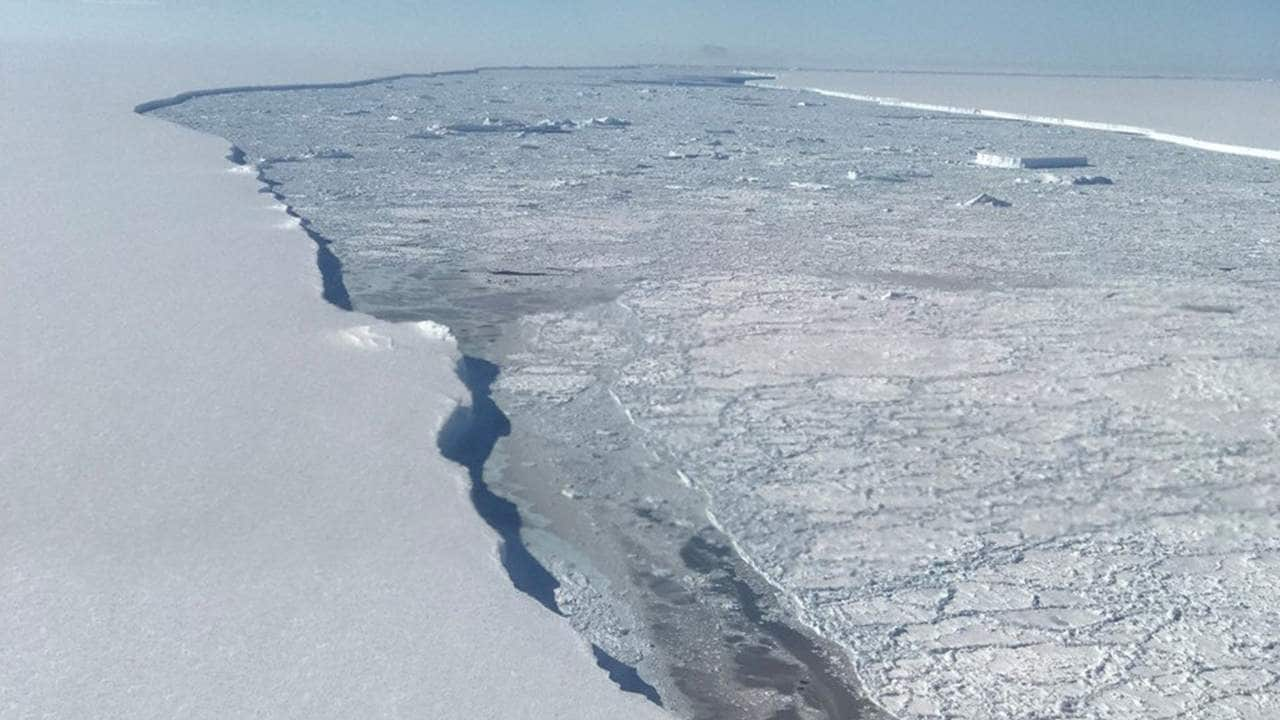tech2 News StaffSep 23, 2019 16:32:13 IST
The fate of the world’s coastal regions and the hundreds of millions of people who inhabit them depend on a block of ice atop West Antarctica on track to lift global oceans by at least three metres.
It is not, according to available science, a matter of “if” but “when”.
Anders Levermann, a professor at the Potsdam Institute of Climate Impact Research in Germany and a top expert on Antarctica, spoke to AFP — days before the release in Monaco of a major UN report on oceans and Earth’s frozen zones – about how climate change is impacting the world’s coldest region.
Does global warming affect Greenland and Antarctica the same way?
No.
In Antarctica, 99 percent of all ice loss occurs when ice slides into the ocean. There is practically no ice melt on the surface – it’s simply too cold. In Greenland, half of the ice loss is due to meltwater that runs into the ocean. When ice in Antarctica or Greenland slides into the ocean and becomes an ice shelf, it comes into contact with surface water. Even a tenth of a degree increase in the temperature of the water can lead to a significant ice sheet imbalance.
Greenland’s ice sheet is much smaller than Antarctica’s – seven metres of sea-level equivalent vs 55 – but sheds even more mass. That is because Antarctica, even if its topography has fewer barriers, is so much colder.
What do we know about Antarctica that we didn’t know a decade ago?
Ten years ago the modelling of Antarctica showed no significant ice loss within this century. Indeed, there was some debate as to whether the continent might add ice mass. Today, all the ice sheet models lose ice at a significant rate. The continent’s ice sheet has shed about 150 billion tonnes of mass every year since 2005, virtually all of it in West Antarctica.
Ice loss in both Greenland and Antarctica is accelerating. There is no longer any ambiguity. The studies we have in hand tell us that West Antarctica has passed a tipping point. It has become unstable and will discharge all its most vulnerable ice into the ocean. Period.

West Antarctica’s ice sheet has shed about 150 billion tonnes of mass every year since 2005.
How much will Antarctica add to sea-level rise by 2100?
A study I did with numerous colleagues in 2014 estimated that we could get 50 centimetres of sea level from Antarctica by 2100 (which is huge). The last assessment of the Intergovernmental Panel on Climate Change (IPCC) said 16 cm was the upward limit.
In 2016, an important study published in Nature – introducing new physical processes – proposed an even higher contribution, of up to more than a metre. That study has been much criticised, and the findings may be revised.
What will happen after 2100?
In 2100, nothing stops.
If we keep to the Paris Agreement, sea-level rise will at best slow down. If we don’t, it will still be accelerating at the end of the century.
The most vulnerable part of the West Antarctic ice sheet – equivalent to 3.5 metres of sea-level rise – sits in depressions below sea level, where ocean water infiltrates and erodes the ice sheet from underneath.

The most vulnerable part of the West Antarctic ice sheet -– equivalent to 3.5 metres of sea level rise -– sits in depressions below sea level, where ocean water infiltrates and erodes the ice sheet from underneath. Image: PNAS
How long will it take for the ice sheet to disappear?
I think we are underestimating the speed. That said, for all of the West Antarctic ice sheets to discharge, it will take centuries. But it won’t stop.
How worried should we be?
Nobody should fear for their life because of rising seas. But if New York winds up five metres below sea level behind dikes and levees, I don’t know if people will want to live there.
The real impact is what we will lose. Hong Kong is currently a beacon of democracy in China. New Orleans is a bastion of culture and New York of culture and business. Hamburg, Calcutta and Shanghai – we are going to lose them all to sea-level rise if we do not stop emitting carbon into the atmosphere.
Why is Antarctica harder to figure out than Greenland?
Unlike the Greenland ice sheet, ice loss in Antarctica is not due to melting, but to a discharge of icebergs into the ocean. Getting it right is difficult – at first, we were unable to model and observe this process.
The first satellite images for West Antarctica are from 1992. So when we began to see ice loss there a decade ago, we had less than 20 years of data. That’s not long enough to detect long-term trends. Ice sheets change over a long time scale, so observations can be very misleading. Antarctica is shielded from the rest of the world by the strongest ocean current on the planet, and the situation is similar for the atmosphere. That is also hard to factor in.